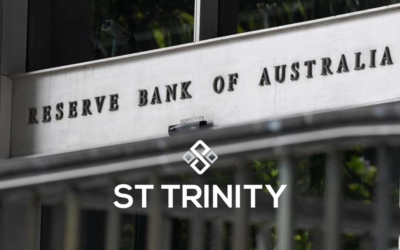Understanding the factors that influence Australian property prices is crucial for anyone navigating the real estate market, as these economic indicators provide essential insights for making informed decisions.
At the core of deciphering property prices in Australia is the competence to analyse economic indicators, which act as crucial signposts for gauging both present market conditions and future trends. Indicators such as interest rates, employment figures, GDP growth, and consumer confidence provide an abundance of information that can significantly shape investment strategies and housing market dynamics.
In this guide, we will explore the substantial link between economic trends and property prices, arming you with the insights necessary to confidently enter the market and seize promising opportunities.

Table of Contents
Current Real Estate Market Overview in Australia
The current Australian real estate market presents a varied landscape influenced by multiple economic factors. Recently, urban areas, especially in Sydney and Melbourne, have experienced notable price growth, fuelled by low interest rates and high demand. Understanding these trends are very crucial for assessing Australian property prices and making informed investment decisions.
Nonetheless, regional markets are gaining traction as remote work becomes more common, encouraging buyers to explore affordable housing outside major cities. The property market remains competitive, with supply constraints in some regions exerting pressure on prices.
Additionally, recent government incentives for first-home buyers have invigorated market activity, although affordability remains a concern for many. The rental market has rebounded, with vacancy rates declining in most capital cities, reflecting a recovery from pandemic-related disruptions.
Overall, the Australian housing market continues to be buoyed by strong demand, although economic uncertainties and potential interest rate changes may influence future trends. Understanding these dynamics is essential for making informed investment decisions.
Key Economic Indicators and How They Affect the Housing Market
Interest Rates
Interest rates are fundamental to understanding the real estate market in Australia, as they directly affect mortgage expenses and borrowing capacity. When interest rates are low, larger numbers of individuals can afford to purchase property, which often leads to rising property prices. In contrast, high interest rates can suppress buyer interest. Higher borrowing costs may reduce the ability for some to afford new homes, thus decreasing demand and stabilising or reducing property prices.
Employment Figures
Employment figures are crucial indicators, as higher employment rates generally translate into increased housing demand. As more individuals possess the financial means to acquire homes, the demand for properties grows. On the flip side, if employment figures are low or the economy faces significant unemployment, potential home buyers may hesitate or be unable to invest in real estate, leading to reduced demand and stagnant or falling property prices.
GDP Growth
As of Australian Bureau of Statistics, in nominal terms, GDP rose 1.4% in March 2024. Australian GDP Gross Domestic Product (GDP) growth reflects the overall economic health. An expanding GDP usually indicates a robust economy, which in turn encourages property investment. As businesses prosper and economic conditions improve, more investors are likely to enter the housing market, driving property prices upward. Conversely, a contraction in GDP could hint at economic challenges, ultimately dampening investor confidence and reducing property market activities.
Consumer Confidence
Consumer confidence measures the level of optimism individuals have regarding their financial prospects. This optimism influences their willingness to invest in real estate. High consumer confidence suggests that individuals feel secure in their financial status, likely increasing their willingness to buy property and pushing prices higher. If consumer confidence wanes, concerns about economic conditions may lead to more cautious spending and investment, thereby cooling the housing market.
By understanding these indicators, potential buyers and investors can make well-informed decisions, effectively navigating the complexities of the housing market. Staying informed about these indicators offers a strategic advantage, especially in a dynamic market like Australia’s. Recognising the interconnectedness of these indicators and their direct impact on buyer behaviour and market trends can provide a cornerstone for strategic planning and successful real estate investment.

Economic Trends Impacting Property Prices
Understanding economic trends is vital for anyone looking to invest in or purchase property in Australia. These trends play a pivotal role in determining property prices, shaping market dynamics in profound ways. Below are some of the key trends impacting property prices:
Urbanisation
Urbanisation is one of the most significant trends affecting property prices. It drives increased demand in major cities, consequently pushing prices upward as more people migrate to urban centres in search of better opportunities.
Technological Advancements and Remote Work
Technological advancements, particularly the rise of remote work, are reshaping residential preferences. With remote work becoming more prevalent, people are opting to live in regional areas, which influences local property values and shifts demand away from urban centres.
Inflation
Inflation is another critical factor to consider. As the cost of living rises, construction expenses escalate as well, impacting both housing supply and prices. This trend can create added pressure on the property market.
International Economic Factors
International economic factors, such as global trade dynamics and currency fluctuations, play a role in swaying foreign investment levels in the Australian real estate market. These influences can lead to variations in market activity depending on the global economic climate.
Population Growth
Population growth, fuelled by immigration and natural increase, intensifies demand and often leads to price surges. As the population continues to rise, so does the need for housing, which places further strain on the market.
By comprehending these trends, potential buyers and investors can foresee changes in the real estate landscape, enabling them to make strategic decisions that are in harmony with broader economic developments, thus optimising their investment returns.

Regional Differences in Property Prices
In Australia, property prices exhibit notable regional differences, reflecting diverse economic conditions and demand levels across the country.
As of early 2024, Sydney remains the most expensive city, with the median house price reaching approximately $1.2 million, a stark contrast to regional areas like Hobart, where the median house price is just over $600,000.
Melbourne follows closely behind Sydney with a median house price of about $940,000, while Brisbane shows a comparatively lower median of just over $870,000. In contrast, Adelaide’s property market is relatively more affordable, with a median house price of around $770,000. Further north, in cities such as Darwin, the median price stands at approximately $500,000.
These regional disparities highlight the impact of local economic conditions, population growth, and housing supply on property values across Australia.
Future Predictions for the Housing Market
Looking forward, the Australian housing market is anticipated to continue evolving, shaped by both domestic and international influences. Interest rates are expected to remain a crucial factor; the recent increase by the Reserve Bank of Australia could moderate the rapid price growth seen in recent years.
Population growth, especially through immigration, is likely to sustain housing demand, particularly in urban centres. However, affordability issues may propel more Australians towards regional areas, continuing the decentralisation trend.
Technological advancements and lifestyle shifts, such as the persistent embrace of remote work, are expected to redefine preferences for property types and locations. Additionally, environmental considerations and sustainable living practices are projected to become integral to property development and buyer decisions.
While market dynamics remain complex, these trends offer valuable insights for investors and buyers aiming to stay ahead in Australia’s ever-changing real estate landscape. Strategic planning and adaptability will be essential for those seeking to capitalise on future opportunities.

Tips For Making Informed Property Decisions
For potential property buyers in Australia, making informed decisions is paramount to securing a worthwhile investment that aligns with personal and financial goals.
Understand the Local Market
Understanding the local market is imperative. Conduct thorough research into recent sales, current property listings, and stay updated on future development plans. This market analysis helps in accurately gauging property values and identifying areas with high growth potential. Knowledge of local demographic trends and infrastructure projects can further enhance your capacity to make informed choices.
Analyse Economic Indicators
Analysing economic indicators such as interest rates and employment trends is critical, as they can markedly impact borrowing costs and housing demand. A comprehensive review of these factors will allow you to anticipate shifts in buyer activity and adjust your purchasing strategy accordingly. Additionally, remaining familiar of changes in consumer confidence and Gross Domestic Product (GDP) figures can provide a broader context for market conditions.
Establish a Clear Budget
Establishing a clear and comprehensive budget is essential. Consider not only the direct purchase price but also an array of ancillary expenses including stamp duty, legal fees, mortgage insurance, and provisions for potential renovations or repairs. Understanding these financial commitments can aid in creating a realistic budget that supports sustainable investment.
Engage With Professionals
Engaging with our reliable property advisors can greatly enhance your decision and provide valuable insights and guidance tailored to your needs. Our experts at St Trinity Property Group, are dedicated to delivering tailored insights and strategic guidance, ensuring that your unique needs are met with precision at every stage of your property journey.
Stay Informed
Understanding and analysing economic indicators such as interest rates, employment figures, GDP growth, and consumer confidence is pivotal for navigating the intricate Australian real estate market.
These indicators offer critical insights into market conditions and potential future trends, equipping prospective buyers and investors with the knowledge to make informed decisions.
The property market in Australia is dynamic, influenced by urbanisation, technology, and international economic factors, among other trends. Regional variations further emphasise the importance of localised market understanding.
As the market continues to evolve, strategic planning, adaptability, and a comprehensive analysis of economic indicators will remain essential tools for seizing opportunities and optimising investment returns in the ever-changing landscape of Australia’s property market.
By staying informed and leveraging these insights, stakeholders can confidently navigate the complexities of the housing market and capitalise on promising prospects.

Frequently Asked Questions (FAQ)
Q: What are economic indicators, and why are they important for the Australian property market?
A: Economic indicators are statistical metrics used to gauge the overall economic performance and predict future trends. They are essential for the Australian property market as they influence borrowing costs, consumer confidence, and investment flows, all of which directly impact property prices.
Q: How do interest rates affect property prices in Australia?
A: Interest rates significantly impact property prices. Lower interest rates reduce the cost of borrowing, making mortgages more affordable. This can increase demand for housing, leading to higher property prices. Conversely, higher interest rates increase borrowing costs, which can reduce demand and potentially lower property prices.
Q: How does consumer confidence influence housing market trends?
A: Consumer confidence measures how optimistic individuals are about their financial situations. High consumer confidence can lead to increased spending and investment in property, pushing prices upward. Low consumer confidence may result in cautious spending and reduced investment in real estate, which can cool the market.
Q: What are the current trends in the Australian real estate market?
A: Current trends include significant price growth in urban areas like Sydney and Melbourne due to high demand and low interest rates, increased interest in regional properties driven by remote work, and government incentives for first-home buyers. There are also varying regional price trends and a recovering rental market post-pandemic.
Q: Why are there regional differences in property prices across Australia?
A: Regional differences in property prices are due to varying economic conditions, population growth, and housing supply in different areas. Major cities like Sydney and Melbourne have higher prices compared to regional areas due to higher demand and economic activity.




